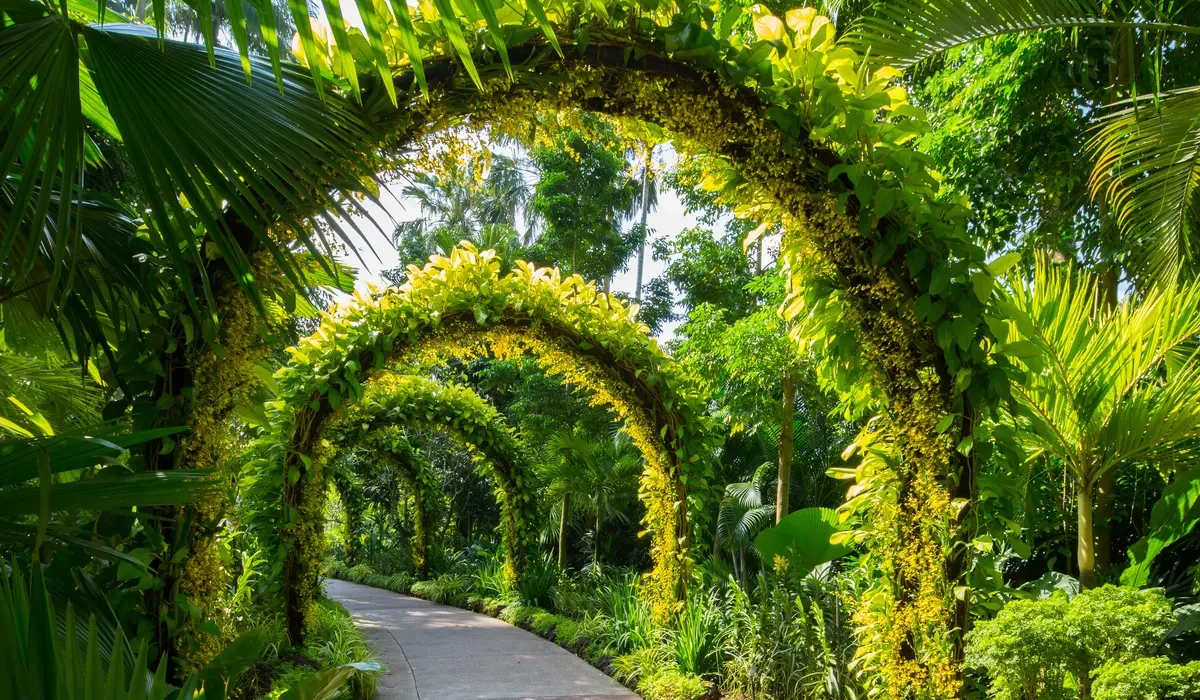Botanical gardens maintain documented collections of living plants for research, conservation, display and education. They also host botanical art exhibitions, tea rooms, book rooms and musical performances.
Some botanical gardens specialize in a specific category of plant, such as medicinal plants, bonsai trees or orchids. Many are part of universities or scientific research organizations and may have associated herbaria.
1. Plant Selection
Botanical gardens maintain documented collections of living plants for study and display. The collection may range in number from a few hundred to many thousand different kinds, depending on the available land and the botanical research interests of the garden.
Using their skills in cultivation and plant propagation, botanical gardens can grow species that would not survive in the wild. They are also able to provide seed banks for ex situ conservation, preserving the genetic diversity of endangered species. They can also support research into botanical taxonomy, phytochemistry and useful plant properties.
Most botanical gardens are open to the public, and offer educational programs for students, researchers and the general public. They also serve as a recreational resource for urban populations, and offer a glimpse into the natural world that the city dweller might not otherwise have access to. They can serve as a mental escape from the stresses of daily life, and can inspire new interest in natural areas. Visiting a botanical garden can be a fascinating and enjoyable experience, but it is important to bring a few things before you go. These include:
2. Planning
A botanical garden is a collection, cultivation and display of plants arranged according to their scientific names. It is also a place of research and education, providing the public with information about plants and their environment.
In modern times, botanical gardens are primarily concerned with displaying ornamental plants in a scheme that emphasizes natural relationships. This differs from the original concern with medicinal plants and the desire to illustrate botanical relationships by means of Linnaean order.
The conservation of endangered plant species has become a major function of botanical gardens. In many cases, botanical gardens are able to provide ex situ conservation of rare species that would otherwise be extinct in the wild, and can therefore serve as valuable sources for future reintroduction efforts.
Botanical gardens also serve the community by providing an excellent environment for recreation, and they are able to reach a large audience through their educational and outreach programs. In addition, they are able to bring a voice of credibility and expertise in matters related to urban greening, sustainability, and biodiversity.
3. Layout
Botanical gardens are designed with the purpose of displaying and preserving a collection of plants in an organized and aesthetic manner. The collection should be arranged to create themes that appeal to the visitor and provide a learning experience.
Plants are often grouped together according to taxonomy in botanical gardens. For example, roses are in the genus Rosa, with a great many species and hundreds of named man-made hybrids. This can help visitors learn more about the plants and their relationship with other plants.
In addition to plants, botanical gardens can also display flowers and other ornamentals. They can also serve as a display of how plants grow in different climates. This can be helpful to home gardeners who want to find ways to adapt their own landscapes.
When Botanica DLC is active, botanical gardens have a secondary optional hot spot need that can only be fulfilled via the bus network. The bonus amount depends on how many plant items are equipped in the gardens. This is different from regular homes, which can have multiple plant items, but only one plot each.
4. Plant Markers
A botanical garden is a park that’s dedicated to the collection, cultivation, preservation and display of a wide variety of plants. Botanical gardens and arboretums offer visitors the opportunity to see many species of trees, shrubs, flowers, vegetables and herbs in the same place. These gardens are also home to research, education and conservation programs that support the work of horticulturists.
When a new plant is planted in the gardens, it receives an accession number which links it to its database record. This long number consists of the first four digits which show the year it was accessioned, followed by sequential numbers with lettered qualifiers (such as “A” and “B”) that indicate multiples of the same type.
This accession number is then engraved onto an aluminum tag that’s screwed into the trunk of a tree or attached with wire to the branches of a shrub. It then displays the botanical name (genus and specific epithet) and family, along with its common name where applicable, and its natural range or cultivar name where relevant. Labels are printed in-house using a metal tag laser marking machine or ID card system which allows for high resolution characters, barcodes for tracking and graphics.
5. Space
A botanical garden is a cultivated green space with documented collections of living plants organized for scientific management and aimed at fostering appreciation of plant diversity. It is also a place where people can learn about plants, their relationship with humans and other organisms, and the environment. The gardens often contain botanical exhibits and display garden designs that feature attractive flowers and plants of interest, horticultural collections that include herbaceous borders, shrubberies and tree plantings, specialized glasshouse collections that may focus on tropical or temperate plants or economically important groups such as orchids or bamboos, and natural areas with native trees and grasses.
Botanical gardens offer informal botanical learning encounters, support biodiversity conservation, and encourage a sense of community and place. They can be a refuge from the stresses of modern urban life, an opportunity to experience a peaceful natural environment, a free play space for children and wildlife, or a place that is healing to adults. The categorized botanical garden elements were organized into a matrix referred to as the field checklist and applied for site analysis at case study institutions using a standardized process that systematically inspected each botanical garden map and added an entry into the spreadsheet for every occurrence of a specific element.






